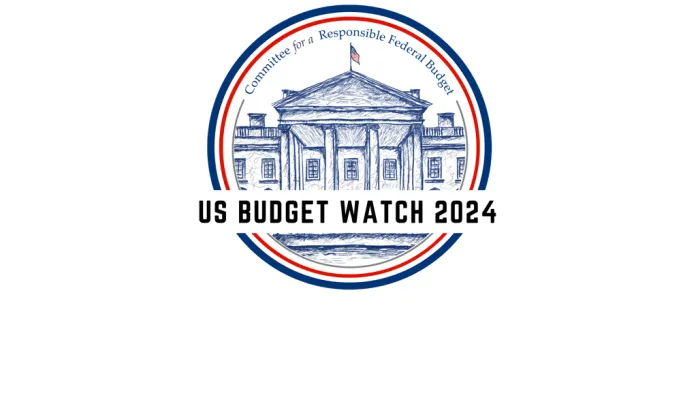The Right Spending Target
A few weeks ago, Fiscal Commission co-chair Erskine Bowles suggested that in designing a plan, "revenue as a percentage of GDP [should not] be much higher than 21%... [and] we have to work to make the tough choices to bring spending down to the same level"
Earlier this week, both Matt Miller and the Center on Budget and Policy Priorities criticized this spending target as far too low. Though we agree that spending cannot be brought down to its historical average overnight, we think that Bowles' goal of letting revenues rise to 21 percent of GDP and eventually bringing spending down to that level is perfectly reasonable.
If we don't get spending under control, we can't hope to control our rising debt over the long-run.
In criticizing this 21 percent goal, Miller argued that "federal spending under Ronald Reagan averaged 22 percent of GDP. Under Bowles's view, therefore, the outer limits of the Democratic Party's 21st-century aspirations would be to run government at a size smaller than did a 20th-century conservative icon... [and] Reagan ran government at this size at a time when 76 million baby boomers weren't about to hit their rocking chairs."
CBPP relies on three basic arguments:
- Population aging and health care cost growth means that our biggest programs will cost more than they used to.
- The government has taken on new responsibilities by enacting new programs.
- Interest on the debt will cost more in the future than it has historically, due to higher levels of debt
Let's address these arguments one at a time.
Miller suggests that bringing spending down to 21 percent of GDP would mean having a smaller state than we did under "conservative icon" Ronald Reagan. Well Reagan may have been a conservative icon, but he did not oversee a small government by any means. In fact, spending as a percent of GDP was larger under Reagan than any other time since World War II, save the current situation. In other words, getting spending down to 21 percent of GDP means spending less than during an era where spending was at its highest, not at its lowest as Miller implies.
During the Clinton Administration spending averaged less than 20 percent of GDP. And by the end of his presidency, it was down to just over 18 percent of GDP. So spending at 21 percent of GDP means spending 1 to 3 percentage points more than our last Democratic president.
That brings us to Miller's second argument (which is also CBPP's first argument): that health care cost growth and population aging threaten to make the same government programs cost far more -- and are already doing so. This is a fair point; as the baby boomers retire and health care grows faster than the economy, the cost of Social Security, Medicare, and Medicaid will skyrocket. But here, we as a society need to make a choice: do we want to maintain historical levels of services, historical levels of spending (and therefore taxes) for these services, or do something in between?
The answer is almost definitely the third, since the first choice is unsustainable and the second choice is unrealistic. In other words, as certain programs tend to become more expensive, we need to do a better job of targeting spending toward where it is needed most -- making hard choices about what we are and aren't willing to spend our scarce resources on. At the same time, of course, we should be trying to attack these drivers directly by encouraging longer working lives and more savings, and by bending the health care cost curve.
We also can't help but point out that while costs of Social Security and Medicare tend to rise faster than GDP, there is no reason that the costs of other programs need to. Defense has already come down significantly since President Reagan was in office, and can come down far more as the wars in Iraq and Afghanistan wind down and as we actually begin to carefully scrutinize normal defense spending. There are many other areas of spending that can and should grow slower than the economy, and others which should shrink or be eliminated altogether.
But what about CBPP's second point, that the government has many new responsibilities now? Maybe so, but governing is about prioritizing. Would Americans be willing to pay higher taxes for a generous Medicare prescription drug plan? For more federal education spending? For larger farm subsidies? Maybe, but since most of these costs have been deficit-financed, we can't know for sure. And if there are newer needs which the government has had to meet, certainly there are older needs toward which the government should no longer be dedicating resources. Let's have that debate, and decide what the government should and shouldn't be spending its money on.
And then there is CBPP's interest argument: the debt is higher, and therefore interest payments are -- so spending will inevitably be a greater share of GDP. Yet if we actually move toward a balanced budget, this simply won't be true. As we bring down the debt, as a share of the economy, it will create a virtuous cycle of deficit reduction. Lower debt means less interest payments means lower spending means lower debt. Not to mention the potential for stronger economic growth (and therefore greater revenues and a higher GDP denominator) which many economists believe will accompany debt reduction.
All these arguments aside, let's keep in mind two things. First, bringing revenues up to 21 percent of GDP would suggest a 3 percentage point increase from the historical average for revenues, and it would mean higher levels of revenue than ever before. Given the fiscal situation, this new normal may indeed be warranted. But taxes cannot do all the lifting -- we need to first and foremost control spending growth. In addition, its important to think about 21 percent of GDP as an aspirational goal for spending; it is what is necessary to balance the budget. Even if we can't get all the way there, as long as our economy is growing faster than our borrowing, we can bring down our debt-to-GDP ratio.
While there is certainly no magic number, 21 percent sounds like a pretty reasonable goal to us.


